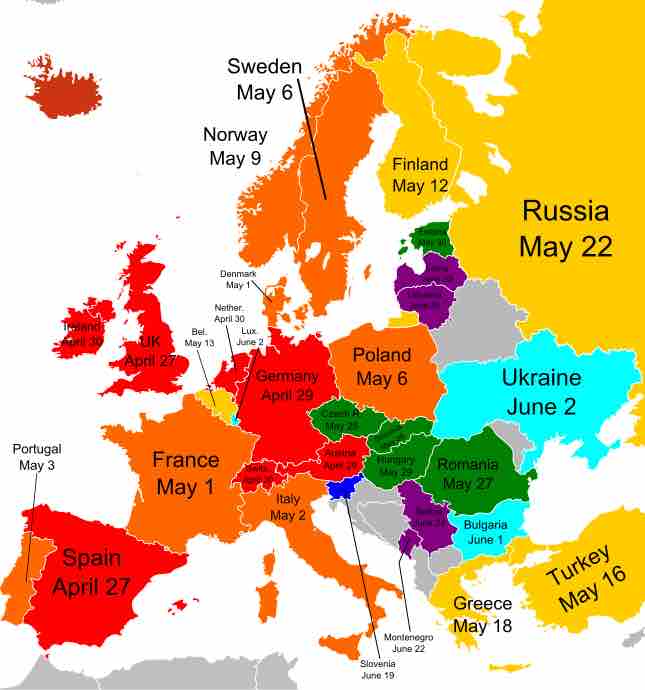Disease Reservoirs
A natural reservoir refers to the long-term host of the pathogen of an infectious disease. It is often the case that hosts do not get the disease carried by the pathogen or it is carried as a subclinical infection and so remains asymptomatic and non-lethal.
Once discovered, natural reservoirs elucidate the complete life cycle of infectious diseases, providing effective prevention and control. Some examples of natural reservoirs of infectious diseases include:
- Bubonic plague: marmots, black rats, prairie dogs, chipmunks, and squirrels for bubonic plague
- Chagas disease: armadillos and opossums and several species of New World Leishmania
- Babeiosis and Rocky Mountain spotted fever: ticks
- Colorado tick fever: ground squirrels, porcupines, and chipmunks
- Rabies: raccoons, skunks, foxes, and bats
- Cholera: shellfish
- Severe acute respiratory syndrome (SARS): bats
- Ebola: fruit bats, subhuman primates, and antelope called duikers
Some diseases have no non-human reservoir: poliomyelitis and smallpox are prominent examples. The natural reservoirs of some diseases still remain unknown.
DISEASE EPIDEMICS
In epidemiology, an epidemic occurs when new cases of a certain disease, in a given human population, and during a given period, substantially exceed what is expected, based on recent experience. Epidemiologists often consider the term outbreak to be synonymous to epidemic, but the general public typically perceives outbreaks to be more local and less serious than epidemics.
Epidemics of infectious disease are generally caused by:
- a change in the ecology of the host population (e.g. increased stress or increase in the density of a vector species)
- a genetic change in the parasite population
- the introduction of a new parasite to a host population (by movement of parasites or hosts)
Generally, an epidemic occurs when host immunity to a parasite population is suddenly reduced below that found in the endemic equilibrium and the transmission threshold is exceeded.
An epidemic may be restricted to one location; however, if it spreads to other countries or continents and affects a substantial number of people, it may be termed a pandemic . The declaration of an epidemic usually requires a good understanding of a baseline rate of incidence. Epidemics for certain diseases, such as influenza, are defined as reaching some defined increase in incidence above this baseline.

Spread of H1N1 in Europe, 2009
The World Health Organization declared the new flu strain H1N1 as a pandemic in June 2009.
A few cases of a very rare disease may be classified as an epidemic, while many cases of a common disease (such as the common cold) would not. An epidemic disease is not required to be contagious, and the term has been applied to West Nile fever.
EPIDEMIC OUTBREAKS
There are two types of epidemic outbreaks: (1) In a common source outbreak, the affected individuals had an exposure to a common agent. If the exposure is singular and all of the affected individuals develop the disease over a single exposure and incubation course, it can be termed a point-source outbreak. If the exposure was continuous or variable, it can be termed a continuous outbreak or intermittent outbreak, respectively.
(2) In a propagated outbreak, the disease spreads person-to-person. Affected individuals may become independent reservoirs leading to further exposures. Many epidemics will have characteristics of both common source and propagated outbreaks. For example, secondary person-to-person spread may occur after a common source exposure or environmental vectors may spread a zoonotic disease agent.
The conditions which govern the outbreak of epidemics include infected food supplies, such as drinking water contaminated by waste from people with cholera or typhoid fever or ‘fast food' products contaminated with salmonella. The migrations of certain animals, such as rats, are in some cases responsible for the spread of plague, from which these animals die in great numbers.
Certain epidemics occur at certain seasons: for example, whooping-cough occurs in spring, whereas measles produces two epidemics - as a rule, one in winter and one in March. Influenza, the common cold, and other infections of the upper respiratory tract, such as sore throat, occur predominantly in the winter.
There is another variation, both as regards the number of persons affected and the number who die in successive epidemics: the severity of successive epidemics rises and falls over periods of five or ten years.